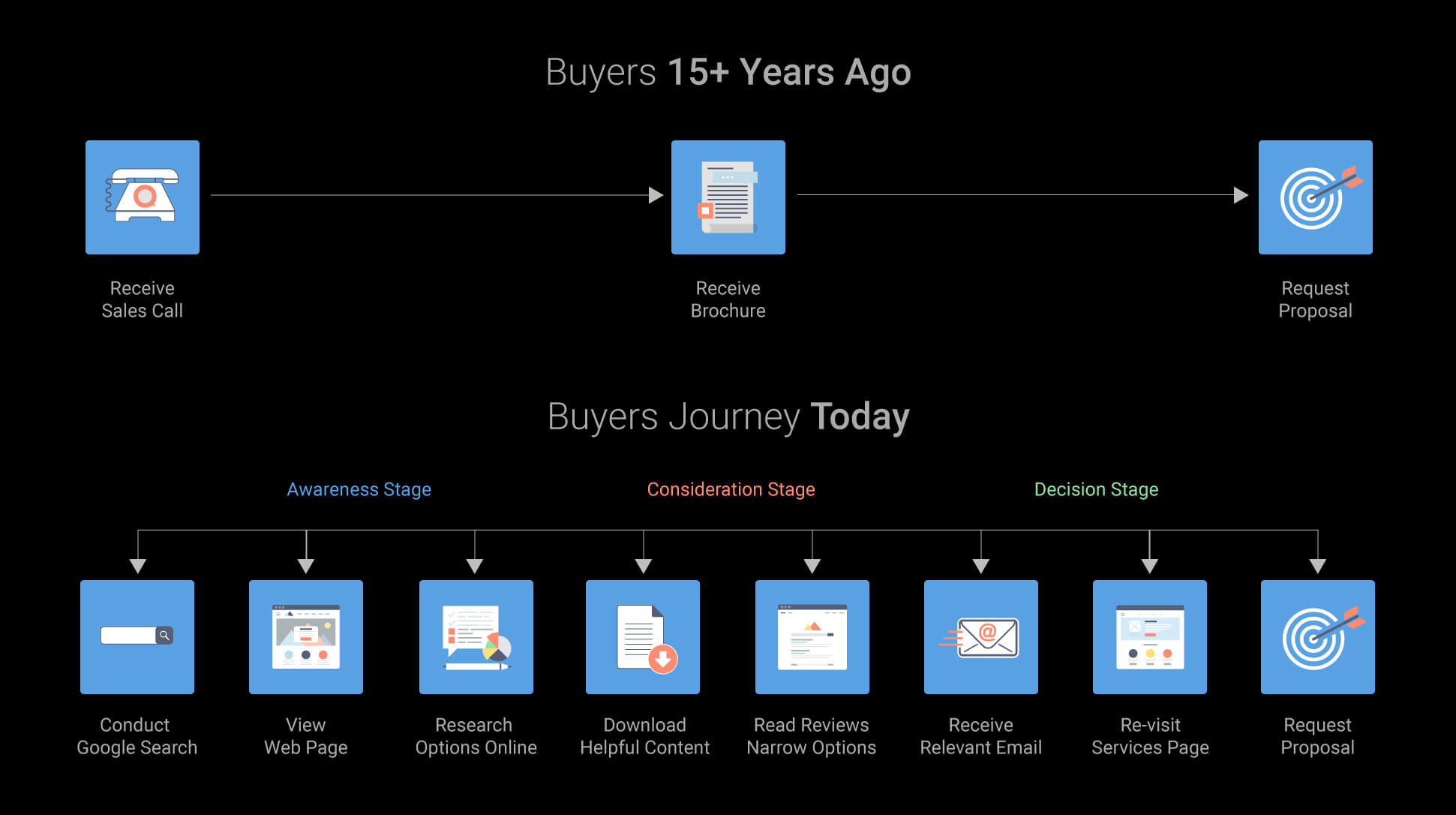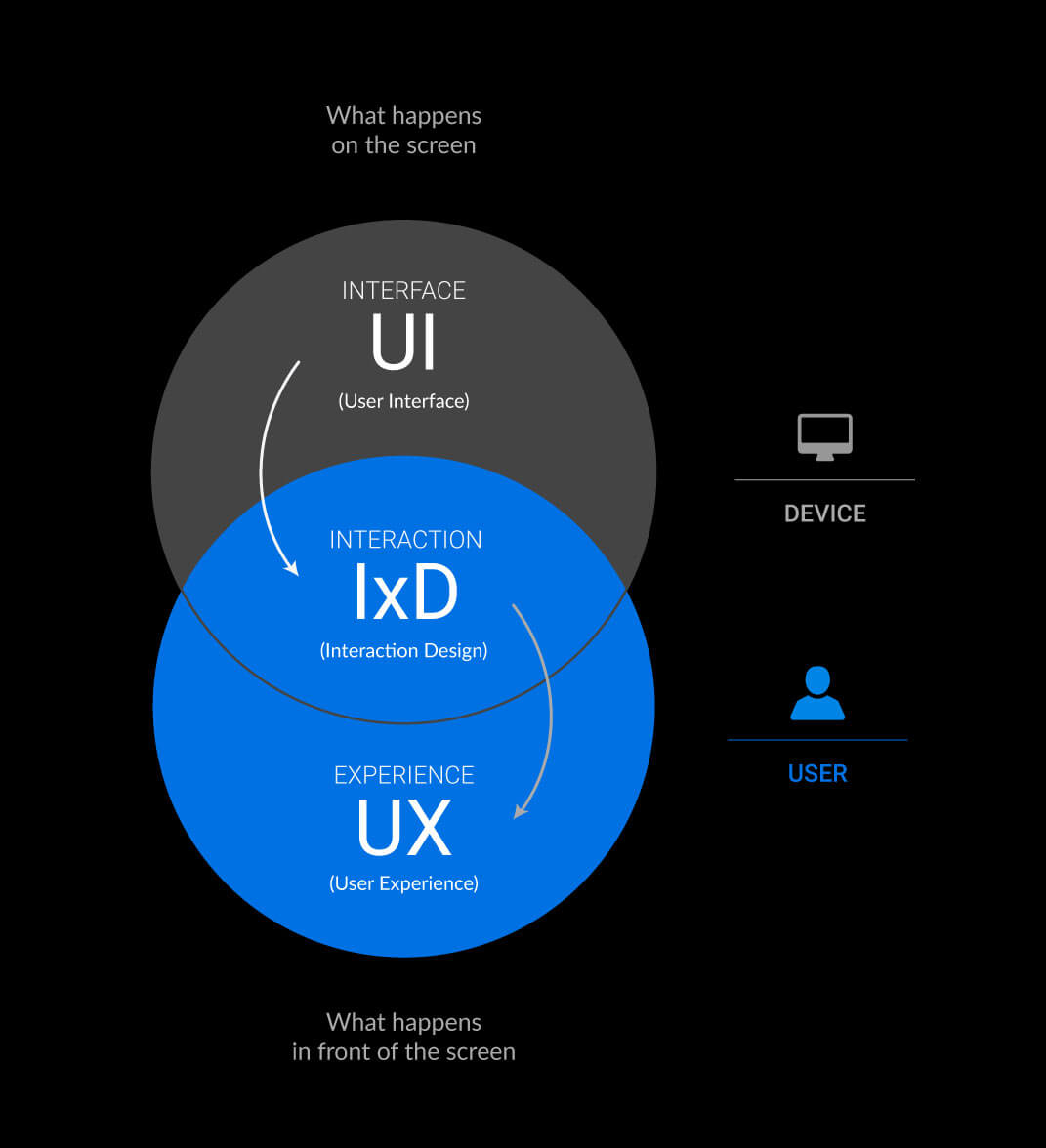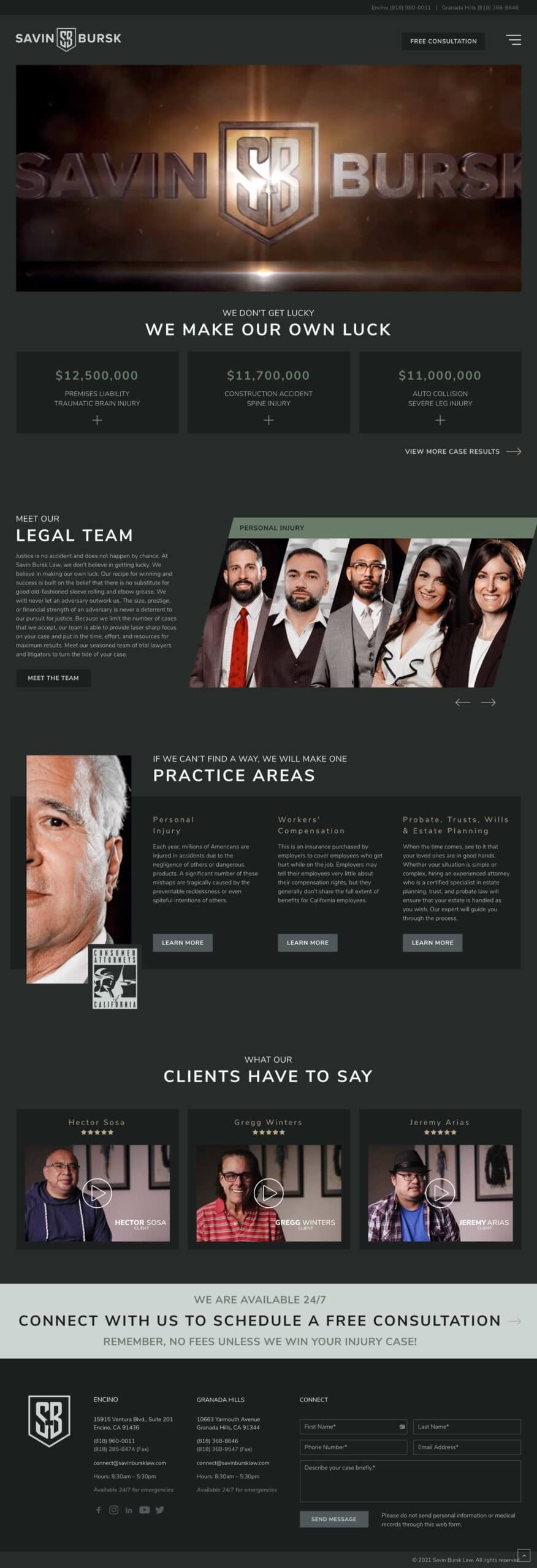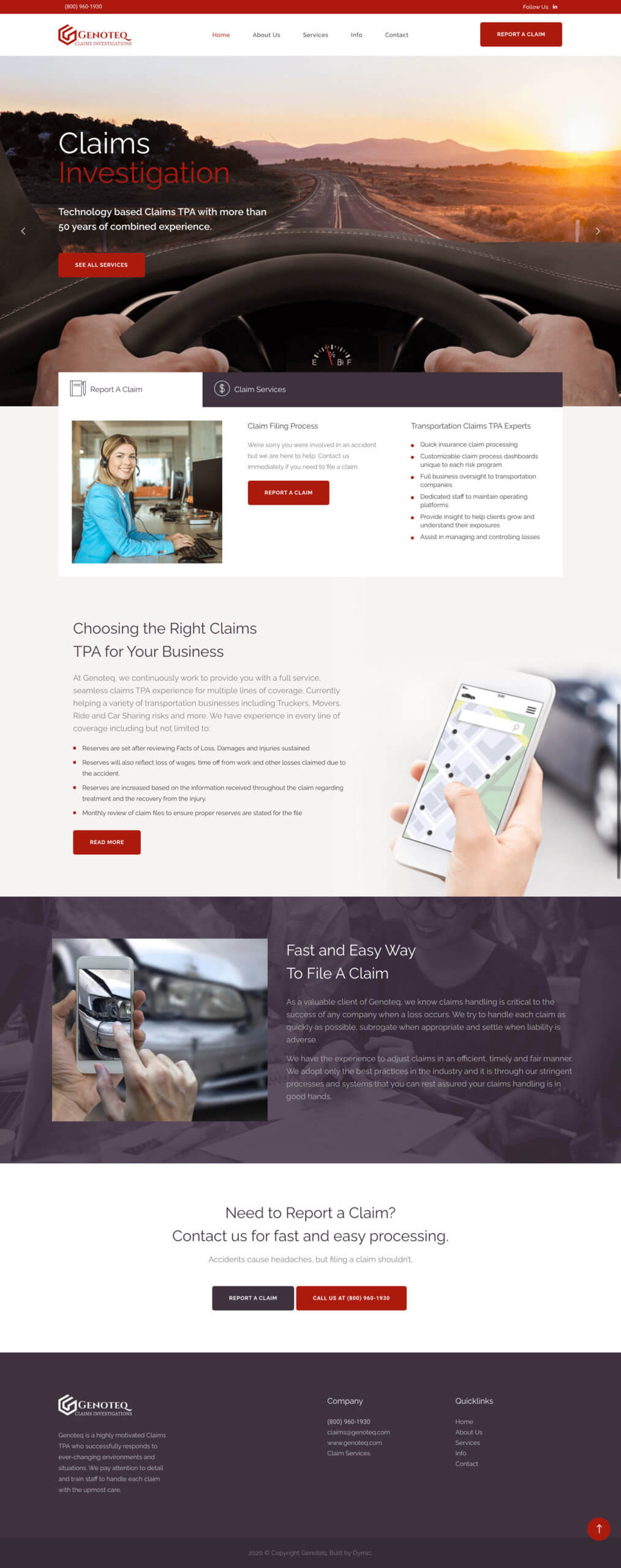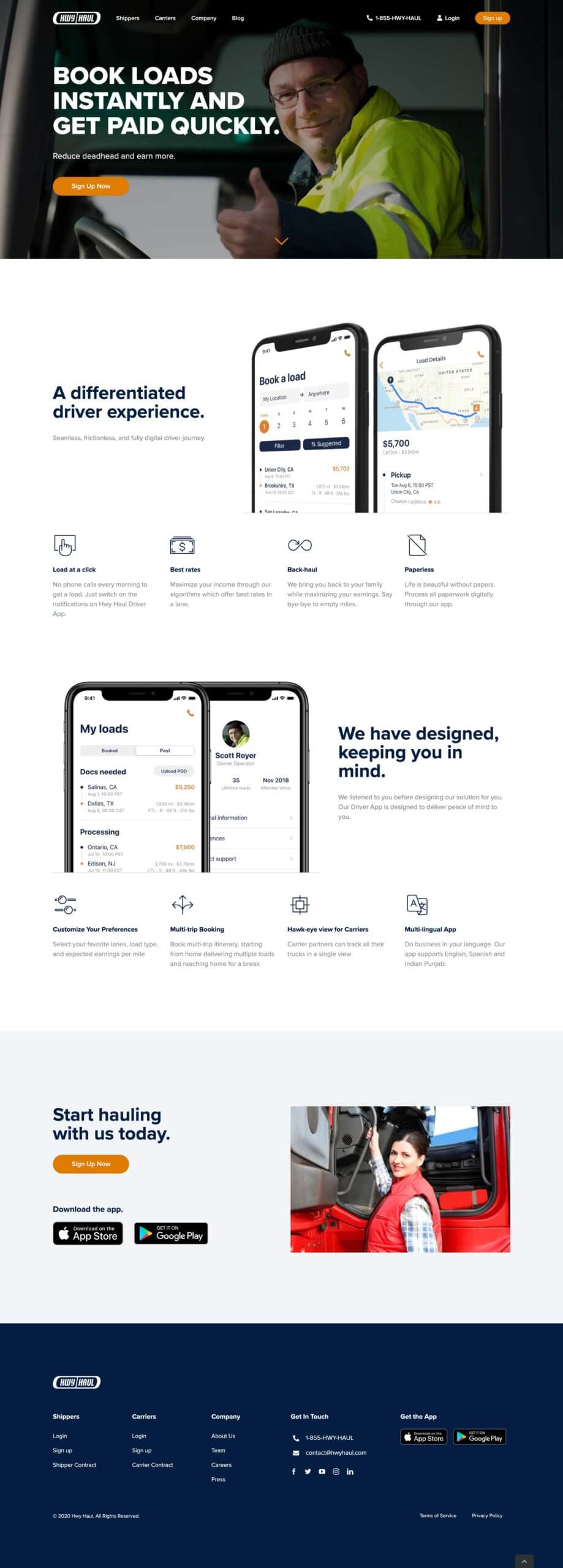Aligning the Sales Process
with the Buyer's Journey
The path to more leads, pipeline, & revenue
The Challenge
Until the late 1990s, interested buyers had little choice but to contact sellers for product information. But the internet has changed all that and the buying process has evolved significantly. Today’s buyers have instant access to product information and prefer establishing their requirements without the influence or persuasion of salespeople. Consequently, outbound sales and traditional lead generation methods can no longer reach and influence prospects the way they once could, and control of the buying process has shifted to the buyer.
Our Solution
Today, buyers prefer a self-service approach to research and decision-making. This change in behavior has dramatically elevated the importance of a website and its content. Now, it is the key to effective sales and marketing communications and the connecting point for nearly every aspect of a digital marketing strategy. For this reason, Dymic’s approach to web design goes beyond the creation of an online brochure and begins by aligning the sales process with the modern buyer’s journey. This is how the right content strategy, information architecture, and visual design is optimized to create leads, drive the sales pipeline, and generate revenue.
Aligning the Sales Process with the Buyer's Journey
The path to more leads, pipeline, & revenue
The Challenge
Until the late 1990s, interested buyers had little choice but to contact sellers for product information. But the internet has changed all that and the buying process has evolved significantly. Today’s buyers have instant access to product information and prefer establishing their requirements without the influence or persuasion of salespeople. Consequently, outbound sales and traditional lead generation methods can no longer reach and influence prospects the way they once could, and control of the buying process has shifted to the buyer.
Our Solution
Today, buyers prefer a self-service approach to research and decision-making. This change in behavior has dramatically elevated the importance of a website and its content. Now, it is the key to effective sales and marketing communications and the connecting point for nearly every aspect of a digital marketing strategy. For this reason, Dymic’s approach to web design goes beyond the creation of an online brochure and begins by aligning the sales process with the modern buyer’s journey. This is how the right content strategy, information architecture, and visual design is optimized to create leads, drive the sales pipeline, and generate revenue.
OUTBOUND VS. INBOUND MARKETING
Helping... Instead of Selling
Simply put, traditional outbound marketing pushes general messages to a wide, mostly uninterested audience. Conversely, inbound marketing engages people who are already interested and actively seeking a solution. Since today’s buyers have so many options and ways to avoid outbound sales techniques, shifting to an inbound marketing strategy is fast becoming a less costly, more effective approach. At the center of this methodology is developing content relevant to the buyer’s decision journey. Since not every inbound lead that converts is ready to buy, creating a website that also delivers supportive (downloadable) content – for every stage of the customer journey – is essential to building a successful inbound strategy.
OUTBOUND VS.
INBOUND MARKETING
Helping...
Instead of Selling
Simply put, traditional outbound marketing pushes general messages to a wide, mostly uninterested audience. Conversely, inbound marketing engages people who are already interested and actively seeking a solution. Since today’s buyers have so many options and ways to avoid outbound sales techniques, shifting to an inbound marketing strategy is fast becoming a less costly, more effective approach.
At the center of this methodology is developing content relevant to the buyer’s decision journey. Since not every inbound lead that converts is ready to buy, creating a website that also delivers supportive (downloadable) content – for every stage of the customer journey – is essential to building a successful inbound strategy.
WEBSITE EVOLUTION
From Brochure to
Sales & Marketing Machine
Not long ago, websites were just an electronic version of the corporate brochure. Nowadays, the website has become the sales expert for the first 80% of the buyer’s journey. For this reason, it should help, guide, and educate buyers via e-books, white-papers, videos, infographics, tip sheets, and other specialized, high-value content. The goal is to position the website as a valuable resource, establish the brand as a thought-leader, and create the opportunity to continue the conversation – by adding potential buyers to the top of the sales funnel – as a qualified marketing lead. Watch the video to learn more.

Watch Video
WEBSITE EVOLUTION
From Brochure to Sales & Marketing Machine

Watch Video
Not long ago, websites were just an electronic version of the corporate brochure. Nowadays, the website has become the sales expert for the first 80% of the buyer’s journey. For this reason, it should help, guide, and educate buyers via e-books, white-papers, videos, infographics, tip sheets, and other specialized, high-value content. The goal is to position the website as a valuable resource, establish the brand as a thought-leader, and create the opportunity to continue the conversation – by adding potential buyers to the top of the sales funnel – as a qualified marketing lead. Watch the video above to learn more.
GROWTH DRIVEN DESIGN
Qualities of an Inbound Website
Modern websites should produce qualified inbound leads regularly and in sufficient volume to enable a business to generate revenue and grow. The buyer, not the design, must be the number one priority – meeting their needs at every stage of the buying journey. To do this, the website needs to accomplish four fundamental objectives:
GROWTH DRIVEN DESIGN
Qualities of an Inbound Website
Modern websites should produce qualified inbound leads regularly and in sufficient volume to enable a business to generate revenue and grow. The buyer, not the design, must be the number one priority – meeting their needs at every stage of the buying journey. To do this, the website needs to accomplish four fundamental objectives:
JOURNEYS & PERSONAS
Audience Research
The Modern Marketing Tool Kit
Dymic is shifting the focus to customer experience rather than leaving the buyer’s journey as an afterthought. Because the preferences, behaviors, and expectations of B2B customers are increasingly influenced by their experiences with B2C brands. These consumers, many of them younger professionals, now seek the same experience in their business interactions. To build a website that accommodates and supports this new generation of buyers, Dymic’s design teams develop a creative brief with buyer personas to identify the brand’s ideal customer. This knowledge is used to create customer journey maps that reveal how prospective buyers are engaging the brand along the path to purchase—and beyond.
3-4 Buyer personas typically account
for 90% of a company’s sales
JOURNEYS & PERSONAS
Audience Research
The Modern Marketing Tool Kit
Dymic is shifting the focus to customer experience rather than leaving the buyer’s journey as an afterthought. Because the preferences, behaviors, and expectations of B2B customers are increasingly influenced by their experiences with B2C brands. These consumers, many of them younger professionals, now seek the same experience in their business interactions.
To build a website that accommodates and supports this new generation of buyers, Dymic’s design teams develop a creative brief with buyer personas to identify the brand’s ideal customer. This knowledge is used to create customer journey maps that reveal how prospective buyers are engaging the brand along the path to purchase—and beyond.
3-4 Buyer personas typically account
for 90% of a company’s sales
RESEARCH INSIGHTS
Content Strategy
Needs, Pain Points & Business Objectives
Content strategy may seem like an intangible, undefinable term, but there are clearly identifiable guidelines. For example, creating effective, relevant, and educational content requires a deep understanding of the buyer’s needs, goals, pain points, and (in B2B cases) business objectives. It is nearly impossible to create a successful website or other major digital initiative without knowing who the content is supposed to resonate with and how it will inspire action. When Dymic approaches a creative marketing project such as a new or redesigned website, content is always a part of the conversation because it ensures the end product succeeds in both communicating and motivating effectively.
Content marketing generates over
3 times as many leads as outbound marketing and costs 62% less
78% of buyers consume three or more pieces of relevant content before talking to a representative
RESEARCH INSIGHTS
Content Strategy
Needs, Pain Points & Business Objectives
Content strategy may seem like an intangible, undefinable term, but there are clearly identifiable guidelines. For example, creating effective, relevant, and educational content requires a deep understanding of the buyer’s needs, goals, pain points, and (in B2B cases) business objectives. It is nearly impossible to create a successful website or other major digital initiative without knowing who the content is supposed to resonate with and how it will inspire action. When Dymic approaches a creative marketing project such as a new or redesigned website, content is always a part of the conversation because it ensures the end product succeeds in both communicating and motivating effectively.
Content marketing generates over
3 times as many leads as outbound
marketing and costs 62% less
78% of buyers consume three or more pieces of relevant content before
talking to a representative
BEHAVIORAL SCIENCE
Choice Architecture
Web Design & The Psychology of Decision Making
Many websites assume buyers know and understand what they need and how to best accomplish their goals. For an e-commerce brand, that may be an accurate assumption. But it is probably insufficient for people purchasing life insurance, comparing business loans, or creating a retirement plan. In many cases, the terminology alone can be confusing for anyone who doesn’t have specialized training. With this in mind, Dymic goes beyond visual design and dives into the psychology of decision making through Behavioral Science. Choice architecture, for example, is the holistic presentation and framing of information to help people make complex decisions. It is the strategic use of ‘nudges’ to guide – not force – prospective buyers down a specific path. This approach reduces decision fatigue and is a very effective “pre-launch” conversion optimization tool when used responsibly and thoughtfully.
Surprisingly, 68% of small businesses have no documented
or structured conversion rate optimization strategy.
BEHAVIORAL SCIENCE
Choice Architecture
Web Design & The Psychology
of Decision Making
Many websites assume buyers know and understand what they need and how to best accomplish their goals. For an e-commerce brand, that may be an accurate assumption. But it is probably insufficient for people purchasing life insurance, comparing business loans, or creating a retirement plan. In many cases, the terminology alone can be confusing for anyone who doesn’t have specialized training.
With this in mind, Dymic goes beyond visual design and dives into the psychology of decision making through Behavioral Science. Choice architecture, for example, is the holistic presentation and framing of information to help people make complex decisions. It is the strategic use of ‘nudges’ to guide – not force – prospective buyers down a specific path. This approach reduces decision fatigue and is a very effective “pre-launch” conversion optimization tool when used responsibly and thoughtfully.
Surprisingly, 68% of small businesses
have no documented or structured
conversion rate optimization strategy.
USER EXPERIENCE
UX, UI & IX Design
The Customer Satisfaction–Conversion–Retention Journey
The primary goal of a business leader is to increase sales and grow the business. UX, UI & IX Design plays an essential role in achieving this goal because a buyers’ decision to explore or leave a website depends entirely on the UI/UX/IX. Unfortunately, its value is often underestimated and many businesses are paying a hefty price in terms of user engagement, website traffic, and return on investment. As the visual representation of a brand and the revenue engine for business, Dymic believes a website has to be beautiful and functional across devices, with a customer-focused, intuitive interface that behaves like an expert advisor: respectful, generous, and helpful throughout the buyer’s journey.
UX Design
User experience (UX) design includes all aspects of the end-user’s interaction with the company, its services and its products. It involves user research (finding out who the users are in the first place), creating user personas (why, and under what conditions would they use the product) and performing user and usability testing.
UI Design
User Interface (UI) Design considers the look, feel, and interactivity of the product. Like user experience design, user interface design is responsible for the transference of a product’s development, research, content and layout into an attractive, guiding and responsive experience for users.
IX Design
Interaction Design (IX) is the design of the user’s interaction and involves elements like aesthetics, motion, sound, space, and many more. The goal of all these design disciplines is to create products that enable the user to achieve their objective(s) in the best way possible.
Intentional and strategic user experience design
can increase conversion rates by 400%
USER EXPERIENCE
UX, UI & IX Design
The Customer Satisfaction,
Conversion–Retention Journey
The primary goal of a business leader is to increase sales and grow the business. UX, UI & IX Design plays an essential role in achieving this goal because a buyers’ decision to explore or leave a website depends entirely on the UI/UX/IX. Unfortunately, its value is often underestimated and many businesses are paying a hefty price in terms of user engagement, website traffic, and return on investment.
As the visual representation of a brand and the revenue engine for business, Dymic believes a website has to be beautiful and functional across devices, with a customer-focused, intuitive interface that behaves like an expert advisor: respectful, generous, and helpful throughout the buyer’s journey.
UX Design
User experience (UX) design includes all aspects of the end-user’s interaction with the company, its services and its products. It involves user research (finding out who the users are in the first place), creating user personas (why, and under what conditions would they use the product) and performing user and usability testing.
UI Design
User Interface (UI) Design considers the look, feel, and interactivity of the product. Like user experience design, user interface design is responsible for the transference of a product’s development, research, content and layout into an attractive, guiding and responsive experience for users.
IX Design
Interaction Design (IX) is the design of the user’s interaction and involves elements like aesthetics, motion, sound, space, and many more. The goal of all these design disciplines is to create products that enable the user to achieve their objective(s) in the best way possible.
Intentional and strategic user
experience design can increase
conversion rates by 400%
FIRST IMPRESSIONS
Visual Design
Psychology, Beautiful Things & The Bottom Line
For Dymic designers, beauty and sophistication, ease of use, and a love for detail are a complete and interrelated package. Dymic believes detail and nuance in web design is both a competitive differentiator and a reflection of the quality, credibility, and integrity of the brand, and its products or services. Moreover, as the adage goes, “You only get one chance to make a first impression.” While there’s certainly personal preference in design, science and psychology support the idea that we are all attracted to beautiful things and people inherently react to good design. But building an effective website involves more than aesthetics. It requires a collaborative approach across disciplines — where copy, design, and the customer journey are incorporated from the beginning, so everyone involved understands the goal: create a modern, responsive, buyer-centric website that generates leads, increases sales, and helps brands grow.
75% of users make judgments about a company’s
credibility based on visual design alone
FIRST IMPRESSIONS
Visual Design
Psychology, Beautiful Things
& The Bottom Line
For Dymic designers, beauty and sophistication, ease of use, and a love for detail are a complete and interrelated package. Dymic believes detail and nuance in web design is both a competitive differentiator and a reflection of the quality, credibility, and integrity of the brand, and its products or services. Moreover, as the adage goes, “You only get one chance to make a first impression.” While there’s certainly personal preference in design, science and psychology support the idea that we are all attracted to beautiful things and people inherently react to good design.
But building an effective website involves more than aesthetics. It requires a collaborative approach across disciplines — where copy, design, and the customer journey are incorporated from the beginning, so everyone involved understands the goal: create a modern, responsive, buyer-centric website that generates leads, increases sales, and helps brands grow.
75% of users make judgments about
a company’s credibility based on
visual design alone
GOAL BASED & USER-FOCUSED
Recent Website Projects
(Hover image to “Auto Scroll”)
GOAL BASED & USER-FOCUSED
Recent Projects
(Tap image to “Auto Scroll”)
WEB DESIGN & DEVELOPMENT
Proposal Request Form
By clicking “Submit”, I agree to Dymic’s
Terms of Service and Privacy Policy.
Proposal
Request Form
WEB DESIGN & DEVELOPMENT
By clicking “Submit”, I agree to Dymic’s
Terms of Service and Privacy Policy.

